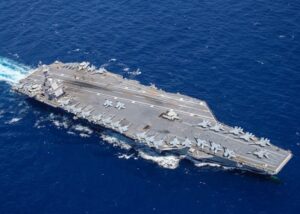
The Navy’s newest aircraft carrier, the USS Gerald R. Ford (CVN-78), is set to deploy next month while the second new carrier will still deploy on time despite changes to its delivery schedule, a program official said last week. At the beginning of the month, CVN-78 returned from its composite training unit exercise (COMPTUEX), which served as its “final graduation exercise” consisting of weeks of working on certifications and requirements to deploy with its air wing and battle group ships,…

 By
By 











